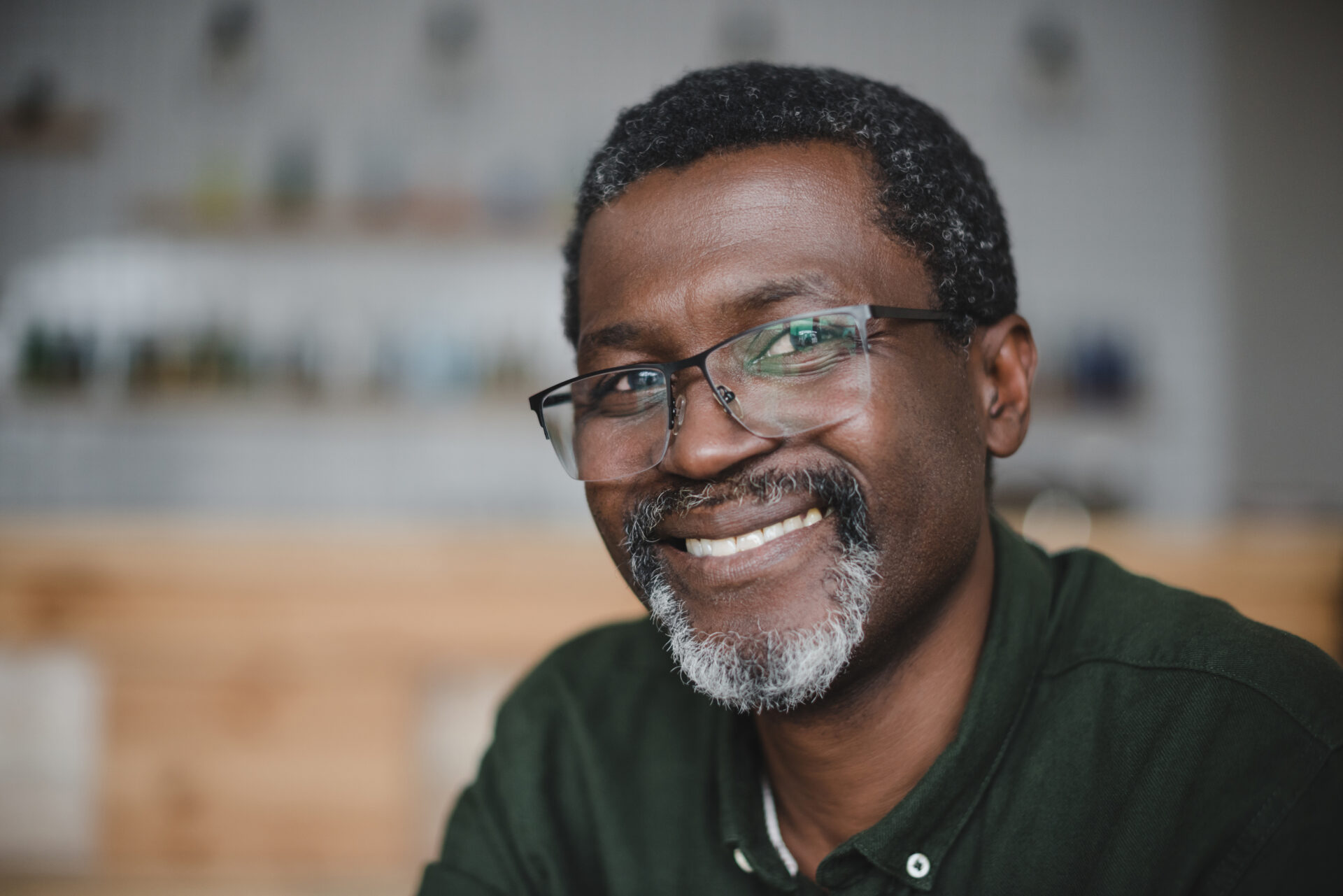”
As someone providing implants for over 30 years with a global reputation for research and publications on primary stability I would not be without my Osstell Beacon and the profound insights and benefits of being able to measure implant stiffness via the ISQ on a longitudinal basis. No clinician serious about providing implants should be without one.
Dr. Michael Norton
”
With Osstell I am always safe to perform immediate loading or to start with the prosthetic loading. The new small Beacon device makes it even more easy to do the measurements.
Dr. Jörg Neugebauer
Pamela K. McClain, DDS & Rachel Schallhorn, DDS Diplomates, American Board of Periodontology
“We are currently using Osstell when we place all implants to establish a baseline measurement of implant stability. At the time of placement if the ISQ is too low (depending on the location – anything below 45) we will remove the fixture, possibly graft and then wait another 3-6 months before trying to place another fixture. We try to take the measurement on the buccal/ lingual, and mesial/distal aspects and record the highest and lowest values. We typically recheck the ISQ value at three months. If the ISQ has improved (or is stable if the number was high to begin with – over 65) we will release the patient for restorative treatment. It gives us and the patient a more objective way to assess the implant stability. If it’s not ready at that time we continue to recheck every 6 weeks until the ISQ has improved or indicates stability. Since we began using this device in 2009, our decision making process has become more simple and objective. We will continue to use the Osstell values to help guide treatment decisions and as a communication tool with our referring dentists.”
”
The technology of resonance frequency analysis gave us a profound insight to what is happening around our implants and has become the essential part of our decision making in immediacy!
Dr. Jörg-Martin Ruppin
”
Osstell is an important part of my implant armamentarium and key aspect of decision making in loading. It has become as vital as the radiograph in outcome assessment and decision making for me.
Dr. George Mandelaris
”
I have been working with dental implants for over 20 years and until now I had no measurable parameter for deciding when to activate an implant, other than operative sensitivity to define the type of bone, insertion torque and manufacturer’s recommendations. Osstell has given us the security of having a safe and predictable parameter for this decision, the possibility of monitoring the evolution of the implant’s osseointegration, as well as being a tool that facilitates communication with the patient. I’m very happy to be able to count on this resource in my daily practice.
Dr. Leandro Salvaro
”
With Osstell, there is no doubt as to whether the implant is osseointegrated or not, contributing to an increase in my success rate in immediate and early loading, as I can quickly be sure whether I can load the implant or not.
Dr. Alef Menezes
Dr. Peter Moy: Why I use Osstell
Dr. Peter Moy, UCLA, USA, talks about how he uses Osstell to monitor osseointegration, reduce treatment time and manage patients at risk.
”
I have gained security and time when it comes to restoring my patient’s implants. For me it is currently an indispensable tool in my usual implantology practice.
Dr. Adrian Daniel Fernández-Ceballos Jiménez
”
After spending thousands of dollars in equipment that gets thrown in that cemetery drawer, the Osstell stands out for being extremely helpful. It’s not only helpful but it’s that kind of equipment that once you try it you can’t go back to not using it.
Patients do appreciate the convenience of restoring the implant as soon as biologically possible, dismantling the old myth that implants should only be restored at least 4 months after placement.
Dr. Luis Leal
Dr. Marcus Dagnelid talks about how his experiences with Osstell.
Dr. Marcus Dagnelid, Board Certified Prosthodontist, CEO and Chief of Staff at Dagnelid Clinic & Falkenberg Clinic, SAACD AB and CEO at European Dental Academy
”
Extraordinary way to elevate my skill level. Give me more confidence in my implatology. Implant placement is with osstell is now more informative and more informative so time od loading is less questionable. Follow up is now with full sense. After two years of ussing and collecting info from my osstellconect my surgeries are more predictable.
Dr. Berin Buntic
”
Monitoring our ISQ values has allowed us to customise our loading protocols for each individual patient increasing the predictability of treatment outcomes. The seamless link between the Ostell and Ostell Connect has been incredible for our workflow and means that our data is all stored in one secure location. Love it!
Dr. Aly Virani
”
The OsstellConnect integrates perfectly with my Osstell Beacon. Since using it, this has become a complete game changer for my implant practice. Traditional notions of torque as the only determinant of implant stability have been completely discarded. Patients receive a much more customized, mathematically detailed explanation of their implant stability as they improve (or sometimes, regress! but honesty and data-driven explanations are important). Usage of Connect has allowed me to keep track of how my implants are doing, how I may refine my surgical techniques, and how I may customize the restorative phase of the treatment.
I highly recommend all individuals integrate Connect into their implant practices. Not only are we providing a higher level of care to patients, but we are also informing and providing better feedback to ourselves every step of the way.
Dr. Steven Lin
”
Osstell is a great tool to asses how the implants are icorporating in bone. Osstell helps me to make better decision in my implant pratice.
Dr. Paweł Jasiński
Dr. Dirk Duddeck at EAO Congress 2015
Dr Duddeck talks about his experiences using Osstell
”
Osstell increased my confidence in determining the appropriate time to load implants, reduced my stress determining if I achieved the initial stability and increased the communication with the patient as they are happy to see the magic green light while testing their implants before loading! Best investment I could have done for my surgery.
Dr. Konstantinor Ierodiakonou
”
We have been using Osstell for about 1 and a half years with extreme satisfaction. we finally have a tool at our disposal that guarantees predictability and safety in managing the timing of implant prosthetics. I use it constantly and very willingly.
Dr. Andrea Stefano Rossi
Dr Gan shares his experience with Osstell
Dr Gan talks about his experience using Osstell.
”
I am now using Osstell routinely to give objective measurements of primary implant stability, and also prior to working the patient up for definitive restoration. It avoids potential failure of osseointegration with reverse torquing an implant that is not yet integrated and gives objective reproducible measurements. These can be shared with referrers as part of the clinical record. The consultation tool is useful in demonstrating the process of implant placement to the patient and providing clear timelines to improve patient understanding and acceptance of treatment. Overall, this has enhanced my implant treatments and management, and the developers are always keen to seek feedback and improve the process and applications.
Dr. Jaclyn Wong
”
OsstellConnect has been of great help to explain our patients the status of their mouth and the treatment plan. It’s been a great advantage for us, too. In our daily practice, OstellConnect is a great help to keep record of all our treatments. It has been a game changer on our clinic and we don’t know how we would get organized if we didn’t have this great tool!
Dr. Luis Pavillard Rodreiguez
”
Times change and technology rides along with it. Like everything in life some novelties are worth it some aren’t. Osstell is definitely on the worth it side. Would definitely buy again.
Broke my long lasting myth/fear to not load a single posterior unit before the 4 month period of “healing” and having an objective tool that measures the implant integration is obviously interesting.
Dr. Luís Leal
”
With this tool the patient becomes aware of the implant protocol according to the most modern guidelines.
Dr. Ennio Pascuzzi
Dr. Anne Magner, DDS, Oral & maxillofacial surgery specialist
#doyouISQ? Dr. Anne Magner does!
”
Actually Osstell is for me an instrument very important for communication with patients and drives the clinical choices in my practice about loading in implantology. Osstell gives also a professional image to my Dental clinic.
Dr. Lorenzo Fabbri
”
I have used Ostell connect few times. It is great to communicate with the patients in full mouth cases. Taking teeth out and placing implants in front of the patients in this software keeps the patients in loop – without showing traumatic pictures of exos and bloody implant surgery. Patients are very happy and satisfied knowing what’s going on. I also take the prints of treatment planning. This helps my staff to get the required components for the surgery. Kills 2 birds with 1.
Dr. Shekher Arora
Prof. Mauro Labanca, Oral surgery & implantology. Professor in oral surgery and anatomy.
Prof Mauro Labanca shares his experience with Osstell.
”
Very smart SmartPeg. Reliable.
Dr. Jeong Yongju
”
The process of updating our Osstell machine has been very smooth and I now look forward to using the Beacon in our daily workflow. Osstell readings are a daily part of our implant practice to monitor integration and liaise with patients and referrers regarding their journey.
An essential piece of kit if you providing implant treatment.
Dr. Rajan Patel
”
Replacing an irrecoverable tooth with an immediate implant and with a definitive crown always immediate represents the challenge in the single tooth in the aesthetic area, thanks to the possibility of measuring the coefficient of stability that was possible to measure with established intervals of 10 days I was able to understand when the implant passes from primary to secondary stability, the ease of removal of the tooth pillar with implant connection Cone Morse therefore without dangers of bringing deep infections during the initial healing, and with the insertion of the Smart peg I recorded all the variations of isq in order to understand which is the most performing implant for that implant.
Dr. Campione Francesco
”
Osstell contributes to long term success to me. It is the only objective method to customise the treatment to the patient,because everybody says that their treatment plan is individual, yet they use standardised periods. In my opinion this is controversial. I prefer using something that is evidence-based. For that reason I work with Osstell.
Dr. Ivaylo Pashov
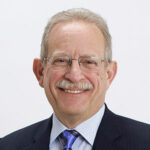
”
Osstell is an essential part of my implant practice. As a surgical prosthodontist I use it on every implant case to determine and document implant stability. ISQ values provide the confidence (based on science) to know when each implant is ready to load, whether for immediate or delayed restoration, helping to achieve a successful restorative outcome for each and every patient
Scott D. Ganz, DMD Prosthodontics, Maxillofacial Prosthetics & Implant Dentistry
”
Hello friends, have been using Osstell ISQ device for around 12yrs now. Have both cord one device & beacon cordless one as well. It adds to our peace of mind whenever loading our implants – be it immediate or early or delayed loadings. Have been using it consistently for all my implant systems, be it Nobel Biocare or Zimmer or Ankylos or Implantswiss implants. We are yet to find it inaccurate or wrong….whereas at times initial primary stability, xrays & cbct can be deceptive before loading. At times we have delayed our prosthetic loading based on the readings of Osstell ISQ meter to a month or more & paved our way to perfectly stable & improved prognosis for that particular implant. Cannot imagine our implant practice without Osstell ISQ anymore. Wishing all of you more of predictable loading after definitive ossteointegration with Osstell ISQ devices.
Dr. Gaurav Gupta
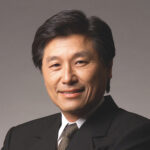
”
Osstell has become my personal guide in determining the appropriate time to load patients’ implants, and I now use it for every implant case.
Prof. Peter Moy

”
Osstell use is critical for my implant practice. Every year, this device more than pays for itself as there are always several patients who heal slowly or who have implants placed with extremely low insertion torque. This confounds my ability to predict when healing has been adequate to proceed to the restorative phase. Osstell provides me with quantitative information necessary to make informed decisions. No longer am I the villain who slows up patient care, but it is objective data about the patient’s healing that becomes the determining factor.
Paul S. Rosen, DMD, MS, FACD

”
Osstell ISQ (Implant Stability Quotient) device is essential in my daily clinical and research practice for many years. The measure of vibrational stability is complementary of the torque measurement and has the advantage that it can be measured several times in the life of the implant. The ISQ is an objective measure of the implant stability that gives guidelines to choose predictable protocols of loading and to do the follow up of the implants over time. The new ISQ device, the Osstell Beacon, is even more user friendly than the older versions and is very easy to read since it uses the codification of color lights to simplify the reading and decisions. The Osstell Beacon is cable free, small, ergonomic and wireless allowing to connect to a free cloud service with the Osstell Beacon, called OsstellConnect, to collect and store ISQ readings with associated implant, patient and protocol data for overview and easy access of my implant treatments for further analysis. This device is one of the best inventions of modern Implantology to measure the rigidity between the implant and bone complex – Osseointegration. A must have to all the oral surgeons and prosthodontists that work in Implantology.
Dr. Raquel Zita Gomes, DMD, PG, Specialization in Implantology, MSc, PhD, Oral Surgeon

”
The use of the Osstell device elevates the confidence in the status of the implant while also increasing the confidence in the patient that they are receiving the best possible care.
Dr. Steven Eckert

”
Patients have always wanted reduced “time to teeth” without risking problems or failures. The improvements in implant surfaces and understanding about the biologic processes of osseointegration make it reasonable to give patients what they want- less waiting time to complete implant dentistry. Measuring stability with Osstell and introducing objective ISQ measurements into clinical decision making get dentists confidence to restore sooner, and patients to accept and value treatment more. Essentially, this technology is more than a gimmick, it provides actionable information that benefits the doctor and patient.
Dr. Jeff Ganeles

”
We are currently using Osstell when we place all implants to establish a baseline measurement of implant stability. At the time of placement if the ISQ is too low (depending on the location – anything below 45) we will remove the fixture, possibly graft and then wait another 3-6 months before trying to place another fixture. Since we began using this device in 2009, our decision making process has become more simple and objective. We will continue to use the Osstell values to help guide treatment decisions and as a communication tool with our referring dentists.
Pamela K. McClain, DDS & Rachel Schallhorn, DDS

”
With increasing demands for the early and immediate loading of dental implants, the measurement of implant stability is very much a hot topic at the moment, with much support in the literature. Peak insertion torque does not give us the information we really require, nor when we really require it. So ISQ using the Osstell machine has become a vital piece of equipment in my office and I use it daily. To monitor the stability of implants over time gives me valuable information as to when I can reliably load them, allowing completion of treatment in an optimal time frame for my patients.
Dr. Stephen L Jacobs
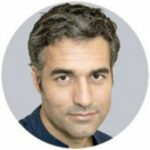
”
Osstell helps me to make a decision and to have a clear insight about my results.Osstell helps me to achieve predictable results with different loading protocols. Osstell helps me when I’m performing a research and monitoring the implant stability is a critical issue.
Dr. Francisco Barbosa

”
In daily practice, we never measure the insertion torque since we use Osstell instead to monitor implant stability. For non-splinted implants, we want the second ISQ value to be ≥70 to initiate the prosthetic rehabilitation with functional loading. In most implant patients, this is either at 4 or 8 weeks of healing allowing an early loading protocol.
Prof. Daniel Buser

”
The ability to better diagnose implant stability and integration by resonance frequency analysis has provided improved confidence of the treating team as well as better patient management. It has also distinguished Misch Implant Dentistry as a practice that utilizes the latest technology available to provide superior care
Dr Craig Misch and Dr Katherine Misch
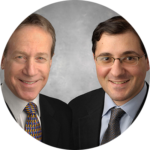
”
Comparative surgical and pre-prosthetic Osstell readings provides an effective foundation for shared responsibility between the patient, surgeon and restorative dentist regarding implant integration status. As the team enters the prosthetic phase of treatment objectives, implant performance data helps to focus outcomes based on realistic expectations.
George Mandelaris, DDS, MS & Alan L. Rosenfeld, DDS, FACD

”
My primary use of the Osstell Instrument in my clinic is to evaluate each implant at the time of placement and again at the second stage abutment connection. This allows for an objective way to evaluate the implant healing and gives some indication of the short term and long term success. Progression of numbers will allow for an understanding of the bone quality and stability of the implant during all phases of treatment. Specially, I use the Osstell at immediate load or early loading depending on what these definitions mean to the clinician
Dr. Jay Malmquist, D.M.D, FACD, FICD, FAO

”
As a surgical specialist, I work closely with my restorative colleagues. When immediate and early loading treatment is selected, I need certainty in communicating implant stability. Osstell ISQ gives me a “number” I can provide as a tangible measurement of stability. If changes in loading protocols are appropriate, I can provide a numerical value that makes sense and keeps all members of the team on the same page. I value this technology and feel it has only just begun to demonstrate all of its applications in clinical practice.
Barry P. Levin, D.M.D

”
Osstell has been a huge bonus to my practice. Prior to the application of resonance frequency it was always guesswork, subjective guesswork, as to the state of the implant. often an implant could appear to be integrated and yet one would find that some weeks or months later that interface broke down. Osstell now allows me to have an objective scale if you like, a scale of integration. I use this routinely on all implants that I place, we assess the initial primary stability and then we re-assess three months later, prior to loading.
Dr. Michael Norton

”
There is no treatment that can be compared with Osstell’s method as traditional methods are highly subjective. Osstell’s ISQ diagnostic makes it possible to discern when osseointegration is sufficient to proceed with restoration. I use Osstell in every implant treatment since it reduces the treatment time of the patient, increases the safety and prognosis of treatments and is based on clinical evidence. The communication with the patient is also easier with the ISQ scale as they can see by numbers when it is the right time to load the implant.
Dr. Marcus Dagnelid, DDS.
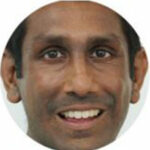
”
I recently purchased the W&H Osstell ISQ module for our existing Implantmed surgical unit to determine the stability of implants at placement and during restoration,” says Dr Vivak Shah, Principal of Saving Smiles, Weedon. “I’ve been very impressed with the performance so far, and it’s already proven to be an invaluable tool in providing objective measurements and acting as a guideline for placement. “Together with the Implantmed, the Osstell ISQ module gives me better timelines and allows me to accurately assess the appropriate time gaps. This in turn ensures more predictable results and helps to speed up the treatment process for the patient too. “The customer service was superb as well, so I would definitely recommend W&H for the Osstell ISQ as well as their other products.
Dr Vivak Shah
Source: Dental Reviews
”
Osstell gives me confidence that the implants are stable.
Dr. Max Miller
”
Osstell gives me confidence in integration.
Dr. David Isaacs
”
Osstell helps me to feel better on the day I have to tighten my final restoration without thinking “Will this implant turn?” because I know Osstell did its job.
Dr. Zeljko Popadic
”
Osstell give me confidence for early loading.
Dr. Thomas Howieson
”
Osstell helps me evaluate primary stability as well as evaluate stability measurements according to consequent healing phases of BIC (bone to implant contact) and also helps in determining the loading time.
Dr. Dhwanit Thakore
”
I previously purchased a product called the Penguin to test implant stability. After a short period of time I returned it and bought the Osstell. I have been very satisfied since the purchase. The Osstell is reliable and very intuitive. I would highly recommend the Osstell!
Dr. David Porter
”
Osstell helps me gain objective measurements for stability and proceed to earlier restoration with my general dentists.
Dr. David Okano
”
Osstell helps me getting patients to own their healing.
Dr. Fred Stalley
